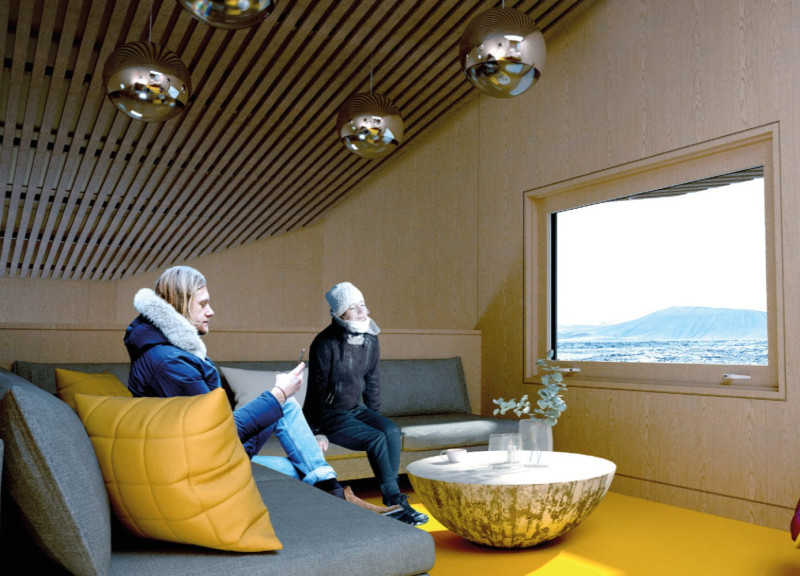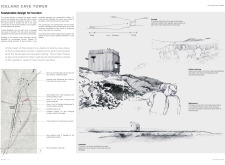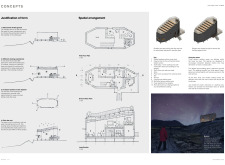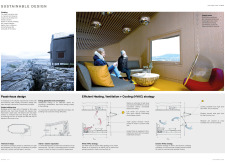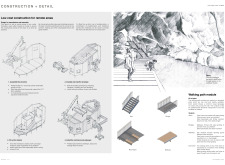5 key facts about this project
The design at Grjótagjá is focused on addressing the challenges brought on by rising tourism in Iceland. Located in a landscape known for its natural beauty, the project includes a viewing tower and visitor facilities. The aim is to create infrastructure that not only enhances the experience for tourists but also supports the preservation of the unique environment. By emphasizing a sustainable approach, the design encourages respectful interactions between visitors and the surrounding geology.
Design Concept
At the heart of the design is a viewing tower that maximizes the scenic vistas of the area. The tower is elevated on stilts, which helps reduce its impact on the ground below. This feature also removes the necessity for winter snow maintenance, allowing for views that are unobstructed. The structure's height provides visitors with a broad perspective of the picturesque landscape, fostering a deeper appreciation for the site.
Spatial Arrangement
The project's layout includes various seating areas that promote engagement among visitors. A rooftop amphitheater acts as a space for outdoor learning and storytelling, enhancing the educational experience. The design makes use of different levels and angled edges, adding visual interest and encouraging visitors to observe the details of the landscape more closely.
Pathways and Materials
Walkways throughout the design are carefully planned to ensure safe access while guiding visitors through the site. These paths use simple materials to promote a cohesive look across the area and facilitate ease of movement. The proposal suggests using charred larch boards for cladding, inspired by the local volcano Hverfjall. This connection to the regional geography adds an element of authenticity and improves the structure's resilience against Iceland's climate.
Sustainability Initiatives
The design incorporates principles of energy efficiency by following Passivhaus standards. This approach minimizes heat loss and maximizes comfort within the building. The project also plans to utilize geothermal energy, highlighting its commitment to sustainable practices. Operating off-grid, it supports essential visitor services while reinforcing the importance of ecological care.
The tower features carefully designed edges that enhance visual access and create patterns of shadow throughout the day, adjusting with the sun's movement. The result is a structure that engages with both its environment and its visitors, offering a thoughtful approach to the interaction between landscape and architecture.


